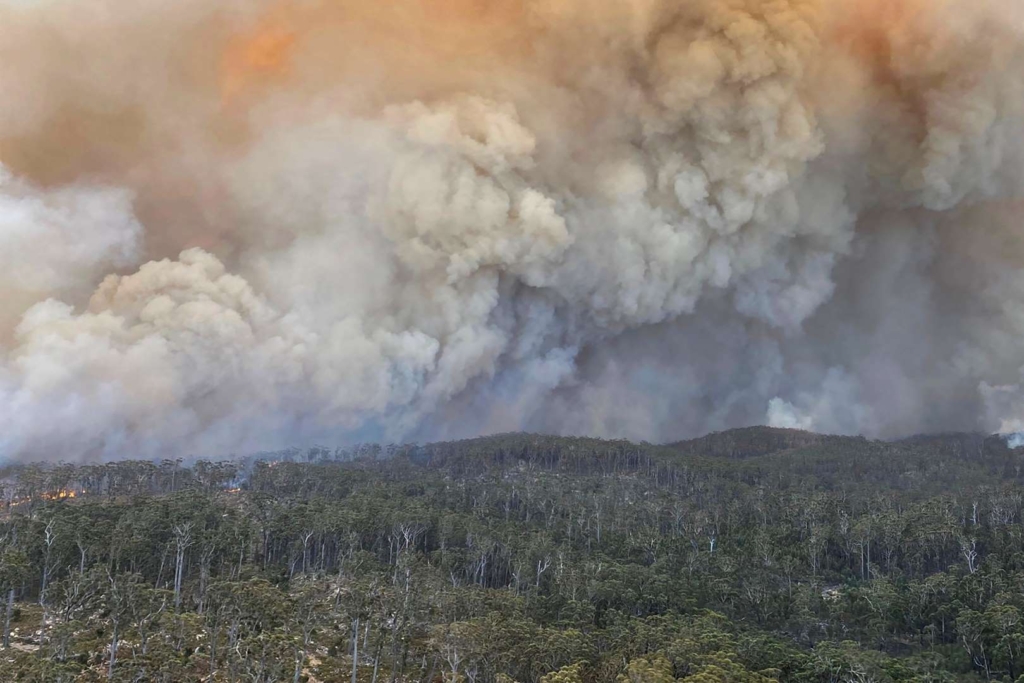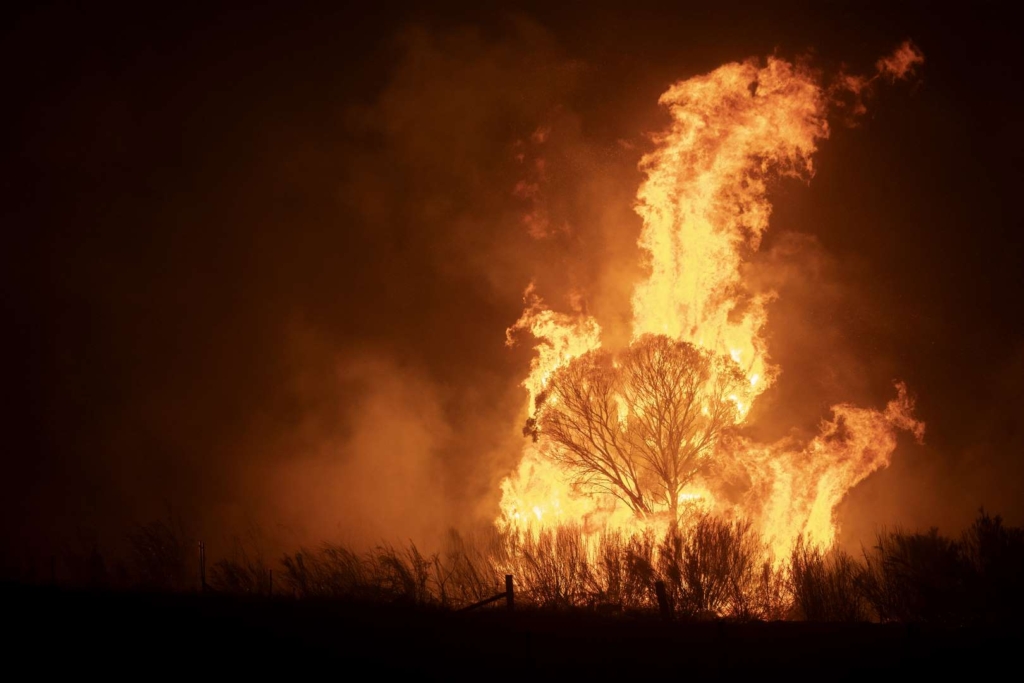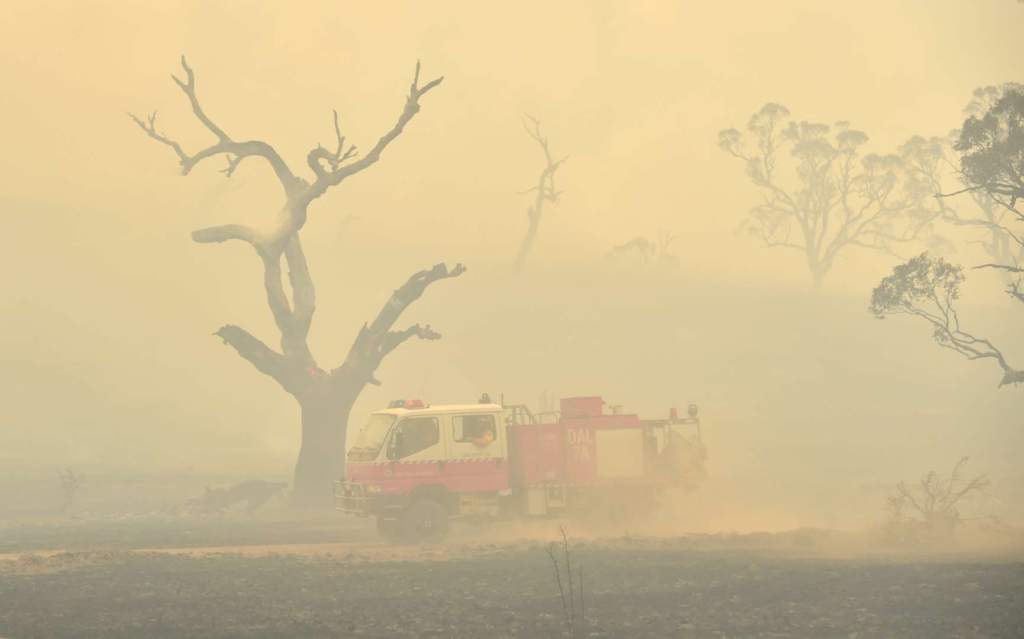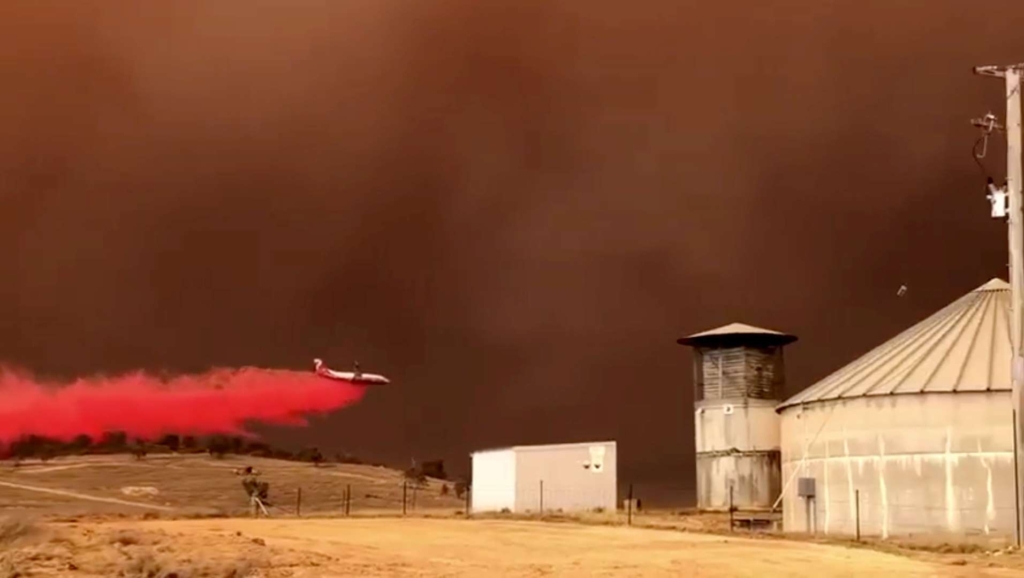Fires set stage for irreversible forest losses in Australia – “Anybody would have said these forests don’t burn, that there’s not enough material, and they are wet. Well they did.”

By Matthew Brown and Christina Larson
18 January 2020
(AP) – Australia’s forests are burning at a rate unmatched in modern times and scientists say the landscape is being permanently altered as a warming climate brings profound changes to the island continent.
Heat waves and drought have fueled bigger and more frequent fires in parts of Australia, so far this season torching some 40,000 square miles (104,000 square kilometers), an area about as big as Ohio.
With blazes still raging in the country’s southeast, government officials are drawing up plans to reseed burned areas to speed up forest recovery that could otherwise take decades or even centuries.
The normal processes of recovery are going to be less effective, going to take longer. Instead of an ecosystem taking a decade, it may take a century or more to recover, all assuming we don’t get another fire season of this magnitude soon.
Roger Kitching, ecologist at Griffith University in Queensland
But some scientists and forestry experts doubt that reseeding and other intervention efforts can match the scope of the destruction. The fires since September have killed 28 people and burned more than 2,600 houses.
Before the recent wildfires, ecologists divided up Australia’s native vegetation into two categories: fire-adapted landscapes that burn periodically, and those that don’t burn. In the recent fires, that distinction lost meaning — even rainforests and peat swamps caught fire, likely changing them forever.
Flames have blazed through jungles dried out by drought, such as Eungella National Park, where shrouds of mist have been replaced by smoke.

“Anybody would have said these forests don’t burn, that there’s not enough material and they are wet. Well they did,” said forest restoration expert Sebastian Pfautsch, a research fellow at Western Sydney University.
“Climate change is happening now, and we are seeing the effects of it,” he said.
High temperatures, drought and more frequent wildfires — all linked to climate change — may make it impossible for even fire-adapted forests to be fully restored, scientists say.
“The normal processes of recovery are going to be less effective, going to take longer,” said Roger Kitching, an ecologist at Griffith University in Queensland. “Instead of an ecosystem taking a decade, it may take a century or more to recover, all assuming we don’t get another fire season of this magnitude soon.”

Young stands of mountain ash trees — which are not expected to burn because they have minimal foliage — have burned in the Australian Alps, the highest mountain range on the continent. Fire this year wiped out stands re-seeded following fires in 2013.
Mountain ash, the world’s tallest flowering trees, reach heights of almost 90 meters (300 feet) and live hundreds of years. They’re an iconic presence in southeast Australia, comparable to the redwoods of Northern California, and are highly valued by the timber industry.
“I’m expecting major areas of (tree) loss this year, mainly because we will not have sufficient seed to sow them,” said Owen Bassett of Forest Solutions, a private company that works with government agencies to re-seed forests by helicopter following fires. […]

The catastrophic scale of blazes in so many places offers the “clearest signal yet” that climate change is driving fire activity, said Leroy Westerling, a fire science professor at the University of Alberta.
“It’s in Canada, California, Greece, Portugal, Australia,” Westerling said. “This portends what we can expect — a new reality. I prefer not to use the term ‘new normal’ … This is more like a downward spiral.” [more]


